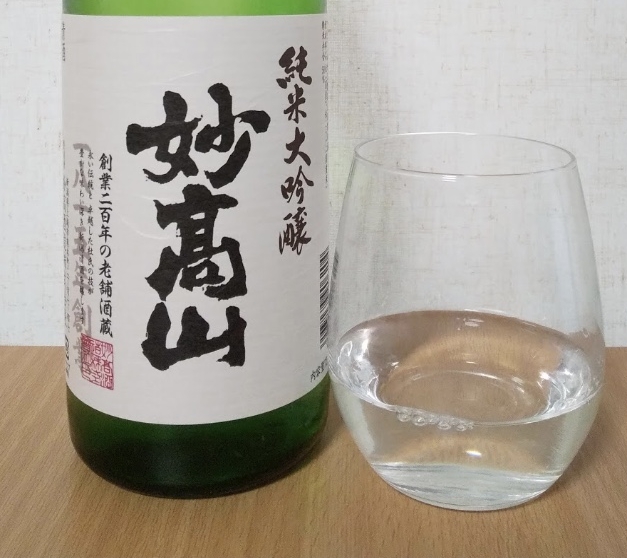
Sake Review – Myoko Junmai Daiginjo
Sake Review – Myokosan Junmai Daiginjo
This is my first sake from Myoko Shuzo, which was founded in Joetsu, Niigata, in 1815. Their website says they focus their brewing on three things: Niigata-grown rice, local water, and the skills of their master brewer and Echigo touji Masayuki Hirata. That all sounds very nice, of course, if not particularly revealing. So, I come to this sake relatively ignorant of its background or philosophy.
To be perfectly honest, I have not had a lot of luck with Niigata sake. The traditional Niigata style, “tanrei karakuchi" (light and dry), is not exactly my preference when it comes to sake. Living in western Japan as I do, I am surrounded by brewers who tend toward the nojun side-rich, deep, heavy sake. Tanrei sake, like that of Niigata or Kochi, often leaves me feeling like something is missing.
So, imagine my surprise when I tried this lovely, elegant, and above all richly flavorful daiginjo from Niigata!
This sake is bottled directly after pressing, then bottle pasteurized and stored. Thus, it is not really covered by the usual terms of nama-chozo or nama-zume, since it is technically pasteurized before being stored, and not tank matured at all. The brewery itself labels it Namazume Binsakkin Reikoujukusei shu, or “Namazume bottle pasteurized, cold matured sake." Bottle maturation is an increasingly popular technique, and brewers seem to feel it creates a more delicate, refined maturation than tanks do.
I cannot speak to just how accurate this is, but if this particular sake is any indication, it does seem to create something special.
In the glass, the aroma was subtle. It had very gentle notes of clean rice, vanilla, and a grassy element to it. However, in daiginjo terms it did not seem to evoke much of the archetypal ginjouka aromas of apple or banana.
The initial sip, however, showed that this is clearly what is known as “aji ginjo.” The sake was brewed for flavor, rather than aroma. It begins with a lush note of creamy vanilla, almost ice-cream like, that is layered with honey, mochi, and a bamboo-like herbal note.
The finish is moderate. It fades slowly into a very more-ish umami, that quickly disappears and leaves you wanting more.
I started drinking chilled, around 15° Celsius, and found that as the sake warmed up to room temperature it opened up and the flavors became almost decadent. The honey notes grew, and this sake became one of the most luxuriously pleasing I’ve had this year.
The balance this sake strikes is delicate. It leans precariously close to cloying, with rich sweet notes that in a lesser sake would weigh on the palate. However, it avoids that with a lovely touch of acidity that never asserts itself as sour, only as a cleansing undertone. It remains luxurious, elegant, and enjoyable to the very last.
I have not yet tried warming it up to my preferred nojun temperature of 40°, but chilled or at room temperature this sake is a delight.
Full Disclosure: This sake was provided free of charge by the brewery in return for an honest review. I have not allowed that to sway my impressions, and strive to remain impartial in all my reviews.




